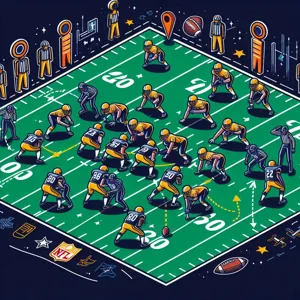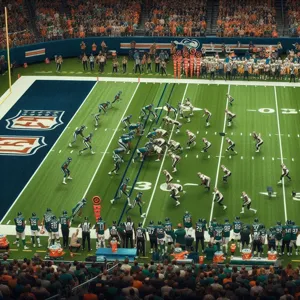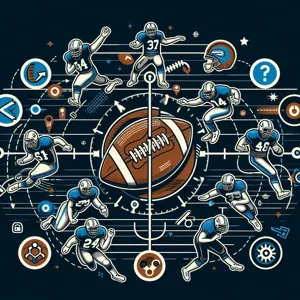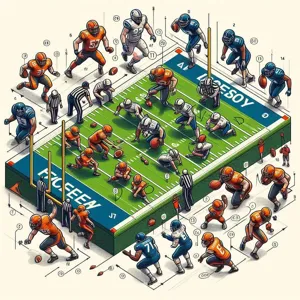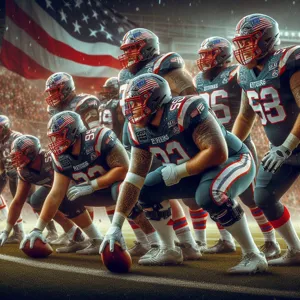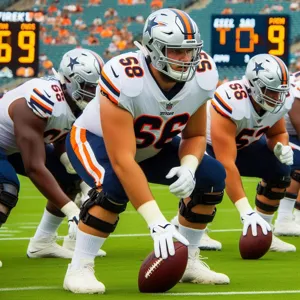In the world of tennis, the ability to consistently hit precise down-the-line shots can be the difference between winning and losing a match.
These shots require not only technical skill but also strategic foresight, as they can catch your opponent off guard and create opportunities for victory. Whether you’re an aspiring player looking to elevate your game or a seasoned athlete seeking to refine your technique, mastering the line is essential. In this blog post, we will explore the top drills designed to enhance your accuracy, power, and confidence with down-the-line shots. From footwork exercises that improve your positioning to targeted practice routines that hone your precision, you’ll discover the keys to transforming your game one powerful stroke at a time. Get ready to take your skills to the next level and dominate the court with pinpoint precision!
1. Introduction to Down-the-Line Shots

In the world of tennis, mastering your shot selection can be the difference between a thrilling victory and a heart-wrenching defeat. Among the various types of shots that players can employ, down-the-line shots hold a special place as they embody precision, power, and the ability to dictate the pace of the game. A down-the-line shot requires not only technical skill but also strategic thinking, as it often places your opponent in a position of difficulty, forcing them to scramble and adjust their positioning.
A down-the-line shot is executed by hitting the ball parallel to the sidelines, targeting the area closest to the court’s boundaries. This shot can be a powerful weapon, particularly when executed with finesse, as it allows players to bypass their opponent’s reach and create openings for winning points. However, it’s not just about power; a well-placed down-the-line shot can catch your opponent off guard, disrupting their rhythm and giving you the upper hand in the rally.
To truly excel at this shot, players must develop a keen sense of timing and positioning. It’s about reading the game, anticipating your opponent’s movements, and knowing when to commit to that bold, line-hugging strike. Whether you’re approaching the net, rallying from the baseline, or responding to a deep return, the ability to execute a reliable down-the-line shot can elevate your game to new heights.
As we delve into the top drills designed to perfect your down-the-line shots, remember that practice is key. Each drill will focus on enhancing your technique, footwork, and strategic mindset, ensuring that when the moment comes to unleash your powerful shot, you’ll be ready to master the line. Let’s get started on the journey to refining this essential skill!
2. Importance of Mastering Down-the-Line Shots
Mastering down-the-line shots is crucial for any tennis player looking to elevate their game. These shots, characterized by their precision and strategic placement, can change the momentum of a match in an instant. When executed correctly, a down-the-line shot not only catches your opponent off guard but also opens up the court, allowing you to dictate play and control the rally.
The importance of down-the-line shots lies in their ability to exploit gaps in your opponent’s positioning. By targeting the sidelines, you force them to stretch and cover more ground, potentially leading to unforced errors. This tactic is especially effective when your opponent leans toward the center of the court, giving you the perfect opportunity to strike.
Moreover, mastering this shot adds variety to your game. Relying solely on cross-court shots can become predictable, making it easier for your opponent to anticipate your next move. A well-timed down-the-line shot disrupts that predictability and keeps your opponent guessing, which is essential in high-stakes scenarios.
Additionally, down-the-line shots can set you up for a winning volley or an advantageous position at the net. When you effectively force your opponent to the side, you create openings for follow-up shots that can lead to a point. The psychological aspect of hitting down the line also cannot be overlooked; it instills confidence in your ability to execute precise shots under pressure.
Incorporating down-the-line shots into your training regimen will not only enhance your tactical awareness but also improve your overall court coverage and shot selection. By understanding the nuances of this fundamental stroke, you’ll be better prepared to seize opportunities during matches and keep your opponents on their toes.
3. Key Techniques for Effective Down-the-Line Shots

Mastering the down-the-line shot is a game-changer in tennis, allowing players to dictate play and keep opponents on their toes. To execute this powerful technique effectively, several key techniques come into play, each contributing to precision and control.
**Grip and Stance:** The foundation of a successful down-the-line shot begins with the correct grip and stance. Most players will benefit from using an eastern or semi-western grip, as these provide the necessary spin and control for powerful shots. Position yourself with your feet shoulder-width apart, knees slightly bent, and your non-dominant foot slightly ahead. This athletic stance allows for quick movement and better balance as you prepare to strike the ball.
**Proper Footwork:** Footwork is crucial when it comes to hitting down-the-line shots. Focus on stepping into the shot with your lead foot as you prepare to make contact. This technique not only positions your body in line with the target but also provides additional power. Practice moving laterally and adjusting your position to ensure you’re hitting the ball at the optimal moment, ideally when it is at waist height.
**Swing Path and Follow-Through:** The swing path for down-the-line shots should be linear and direct. Aim to make contact with the ball in front of your body, using a flatter swing for greater accuracy. As you follow through, extend your racket toward the target, ensuring that your racket face remains perpendicular to the net. A full follow-through not only helps with direction but also adds pace to your shot.
**Visual Focus:** Keeping your eyes on the ball is vital. Track it from your opponent’s racket to your own, ensuring you maintain focus as you prepare to make contact. This concentration will help you gauge the ball’s speed and trajectory, allowing for better timing and execution.
Incorporating these key techniques into your practice will significantly enhance your ability to hit effective down-the-line shots. As you develop confidence in your form and technique, you will find that your overall game improves, allowing you to take control of points and keep your opponents guessing.
4. Drill 1: The Target Practice Drill
The Target Practice Drill is an essential exercise designed to sharpen your down-the-line shots while honing your accuracy and consistency on the court. This drill not only helps you develop precision but also instills confidence when executing those challenging strokes during a match.
To set up, you’ll need a few cones or markers and a partner or a wall, depending on your practice situation. Begin by placing your markers down the baseline, spaced evenly, about 2–3 feet apart. These markers will serve as targets for your shots, challenging you to hit specific areas with each stroke.
Start by standing at the baseline and rallying with your partner or hitting against the wall. Focus on targeting the cones as you hit your forehands and backhands down the line. Keep your footwork light and agile, ensuring that you’re in a balanced position before each shot. Aim for a consistent form, following through completely to maximize power and control.
As you progress, increase the pace of your shots and adjust the distance of the markers to make the drill more challenging. You can also introduce variations by alternating between groundstrokes and volleys, or by incorporating topspin and slice to explore different techniques.
After a set number of repetitions, switch roles with your partner, allowing them to practice their down-the-line shots while you provide feedback. This collaborative aspect not only enhances the drill but also fosters a supportive environment, reinforcing the importance of communication and teamwork in tennis.
By regularly incorporating the Target Practice Drill into your training, you’ll not only refine your ability to hit down the line with precision but also cultivate a sharper mental focus—a crucial element for success in competitive play. Mastering this drill will have you confidently executing those powerful down-the-line shots when it matters most!
5. Drill 2: The Cross-Court to Down-the-Line Transition

### Drill 2: The Cross-Court to Down-the-Line Transition
This drill is designed to sharpen your ability to switch from cross-court shots to precise down-the-line executions, a crucial skill in competitive tennis.
**Setup:** Begin by positioning two cones or targets along the baseline on the opposite side of the court—one located just inside the sideline and the other near the center mark. These will serve as your aiming points for the down-the-line shots.
**Execution:** Start at the baseline on one side of the court. Begin with cross-court rallies, focusing on maintaining a consistent rhythm and depth in your shots. As you gain confidence, progressively aim for the cones with your cross-court strokes, ensuring that you’re generating enough spin and pace to push your opponent back.
Once you feel comfortable, transition to hitting down-the-line. After executing a series of cross-court shots, make a decisive pivot and aim for the down-the-line target. The goal is to practice the timing and footwork involved in this switch—remember, a smooth transition is key.
**Focus Points:**
– **Footwork**: Your positioning is critical. Use quick, small steps to align your body properly for an effective down-the-line shot.
– **Body Rotation**: Engage your core and rotate your hips and shoulders to generate power while keeping your eyes on the target.
– **Follow Through**: Ensure that your racket follows through in the direction of your intended target. This not only enhances accuracy but also helps maintain balance.
**Variations:** To further challenge yourself, incorporate a partner into this drill. Have them return your cross-court shots, and as you rally, call out when you plan to switch to down-the-line. This added element simulates match conditions and helps with reaction time.
By mastering the cross-court to down-the-line transition, you’ll become a more unpredictable and strategic player on the court, keeping your opponents guessing and creating opportunities to capitalize on their weaknesses.
6. Drill 3: The Shadow Swing Drill
The Shadow Swing Drill is an exceptional exercise designed to enhance your muscle memory and refine your technique, all while emphasizing the importance of footwork and body positioning. What makes this drill particularly effective is its simplicity—no court or partner is necessary, making it perfect for solo practice any time, anywhere.
To begin, find a spacious area where you can move freely. Stand in a ready position, holding your racket as if you were about to hit a ball. Visualize an opponent’s shot coming down the line. As the imaginary ball approaches, focus on your footwork first—take a couple of quick steps to position yourself correctly, ensuring your weight is balanced and your body is aligned with the anticipated trajectory of the ball.
Now, execute your stroke as you would in a real match. Swing your racket smoothly through the motion, paying close attention to your grip, follow-through, and body rotation. Aim to mirror the exact mechanics you would use in an actual play scenario, allowing your body to naturally respond to the imagined ball. Repeat this sequence several times, alternating between forehand and backhand swings to build versatility and confidence.
One key component of the Shadow Swing Drill is visualization. Picture the ball’s speed, spin, and angle, and adjust your movements accordingly. This mental engagement not only helps with recall during real matches but also enhances your ability to react quickly when under pressure.
As you progress, consider incorporating additional elements—such as varying your footwork patterns or simulating different shot types, like slices or topspin. By continually challenging yourself, you’ll develop a more instinctive feel for your down-the-line shots.
Ultimately, the Shadow Swing Drill is not just about repetition; it’s about honing your technique in a way that feels natural and fluid. With dedication, you’ll find that your consistency and accuracy improve, translating into more powerful, precise shots during competitive play. Embrace this drill as a vital part of your training routine, and watch your down-the-line game soar to new heights!
7. Drill 4: The Partner Feed Drill

### 7. Drill 4: The Partner Feed Drill
The Partner Feed Drill is a fantastic way to sharpen your down-the-line shots while also building your communication and timing with a partner. This drill not only enhances your technical skills but also simulates real match conditions, making it an essential practice for any serious tennis player.
To set up this drill, find a partner and position yourselves on opposite sides of the court. One player will be designated as the feeder, while the other will focus on executing the down-the-line shot. The feeder will stand just behind the baseline, ready to toss the ball to their partner.
Start by having the feeder gently toss the ball to the side of the court where the down-the-line shot will be played. As the ball approaches, the player will step into the shot, focusing on their footwork, stance, and swing technique. Aim for precision, targeting a specific spot along the sideline. The goal is to hit the ball with enough pace and accuracy to land it deep in the opponent’s court, ideally at the baseline.
After each shot, the players should switch roles, allowing both to practice feeding and striking. This variation keeps the drill engaging and ensures that both players benefit from the exercise. Encourage the feeder to mix up the tosses—varying the height, spin, and angle—so the player can adapt their shots accordingly. Over time, this will help develop a more versatile shot selection during matches.
To add an extra layer of challenge, consider implementing a scoring system. For instance, award points for hitting the target area, or increase the pace of the feeds as the players become more comfortable. The Partner Feed Drill not only builds technical skills but also fosters camaraderie and teamwork, essential elements of any successful tennis partnership. So grab a friend, hit the court, and start perfecting those down-the-line shots!
8. Drill 5: The Wall Rally Drill
The Wall Rally Drill is a timeless and effective exercise that hones your down-the-line shots while also enhancing your overall consistency and control. This drill requires only a wall and your trusty tennis racket, making it an accessible option for players of all levels.
To get started, find a solid, flat wall that allows for a good bounce. Stand a few feet away, ensuring you have enough space to hit the ball comfortably. Start by hitting the ball against the wall, focusing on your down-the-line shots. Aim to send the ball parallel to the sidelines, pushing it deep into the court. This not only reinforces your ability to execute powerful shots but also teaches you precision and accuracy.
As the ball rebounds, practice maintaining a consistent rhythm. The key here is to engage your footwork; move into position for each shot as you would during a match. Use your non-dominant hand to guide your racket and maintain balance, ensuring that each hit is deliberate and controlled.
Challenge yourself by varying the pace and angle of your shots. Start with softer hits to focus on technique, then gradually increase the intensity. You can also incorporate a target on the wall to aim for, which will help you develop greater accuracy with your down-the-line strokes.
For added complexity, include a progression where you alternate between forehands and backhands, simulating real-game conditions. This will keep you agile and adaptable, preparing you for the unpredictability of an actual match.
The Wall Rally Drill is not only a fantastic way to improve your down-the-line shots, but it’s also a great exercise in building endurance and focus. By dedicating time to this drill, you’ll find yourself gaining confidence and precision, making your down-the-line shots a formidable weapon in your tennis arsenal. So grab your racket, hit the wall, and watch as your skills flourish!
9. Incorporating Footwork into Down-the-Line Drills
In the game of tennis, precision and power are key, but none of it matters without the right footwork to back it up. When perfecting your down-the-line shots, incorporating footwork drills into your practice routine is essential. The effectiveness of your shot is heavily reliant on how well you position yourself before making contact with the ball, and this is where footwork comes into play.
Start with simple footwork patterns that focus on lateral movement, as this will help you develop the agility needed to reach the ball efficiently. One effective drill is the “side shuffle to hit.” Set up cones or markers down the sideline of the court and practice shuffling sideways to each cone. As you reach each marker, prepare to execute a down-the-line shot, ensuring your feet are planted firmly for maximum power and accuracy.
Another valuable drill is the “split step and accelerate.” Start in your ready position, then practice the split step as your opponent strikes the ball. This technique allows you to react quickly and move towards the ball, whether it’s coming down the line or angled across the court. Focus on taking quick, deliberate steps to get into position, ensuring you’re balanced and ready to unleash your shot.
Additionally, consider incorporating shadow swings without the ball. Visualize your down-the-line shot as you move your feet into the correct position, simulating the motion of hitting the ball. This not only reinforces your muscle memory but also allows you to fine-tune your footwork without the distraction of an actual ball.
As you integrate these footwork drills into your practice routine, you’ll notice a significant improvement in your ability to hit down-the-line shots with confidence and precision. Remember, mastery of footwork is the foundation that supports every successful shot, transforming your overall game and keeping your opponents on their toes.
10. Common Mistakes to Avoid
When striving to perfect your down-the-line tennis shots, it’s essential to be aware of the common pitfalls that can hinder your performance. Understanding these mistakes not only helps you refine your technique but also enhances your overall game strategy.
**1. Overreaching on the Ball:** One of the most frequent errors players make is trying to hit the ball too far in front of them. This often leads to a compromised swing path and a loss of control. Ensure you position yourself optimally, allowing for a comfortable and balanced shot without overstretching.
**2. Neglecting Footwork:** Footwork is the foundation of any successful tennis shot. Players often underestimate its importance and find themselves out of position, which can result in awkward swings and mis-hits. Focus on maintaining a solid stance and using quick, precise footwork to get into the right position for your shot.
**3. Excessive Grip Pressure:** Many players grip their racket too tightly out of nervousness or a desire for power. This can lead to tension in your arms and shoulders, reducing your ability to generate a fluid stroke. Aim for a relaxed grip that allows the racket to move freely, which helps in achieving better control and accuracy.
**4. Ignoring the Follow-Through:** A common oversight is failing to complete the follow-through after your shot. A proper follow-through not only adds power to your shot but also helps in maintaining balance and positioning for the next play. Practice finishing your swing confidently, ensuring that your racket ends at shoulder height or higher.
**5. Lack of Consistent Practice:** Finally, many players underestimate the importance of regular practice. Mastery of the down-the-line shot requires repetition and consistency. Set aside specific time each week to focus solely on this technique, incorporating drills that emphasize precision and control.
By being mindful of these common mistakes, you can refine your approach to down-the-line shots and significantly improve your game. Remember, mastery comes not just from practice, but from learning and evolving with each swing.
11. Tips for Consistency and Accuracy
When it comes to mastering down-the-line tennis shots, consistency and accuracy are key components that can elevate your game to new heights. Achieving these two crucial elements requires focused practice and a few strategic tips that can help you fine-tune your technique.
First, consider your stance and grip. A stable and balanced stance will not only enhance your power but also improve your control over the ball. Position your feet shoulder-width apart and slightly bend your knees to maintain a low center of gravity. This foundation allows for greater mobility and better weight transfer during your shot. Additionally, ensure your grip is firm yet relaxed; a proper grip allows for a fuller swing while maintaining control over the direction of the ball.
Next, focus on your follow-through. A complete follow-through is essential for accuracy, as it dictates the trajectory and spin of the ball. Aim to extend your racket through the ball, finishing high and towards your target. Visualize your shot landing precisely where you want it to go, as this mental imagery can significantly aid in execution.
Incorporating drills that emphasize repetition can also bolster your consistency. Set up targets along the sideline to challenge yourself, aiming to hit these markers with precision. Start with slower, controlled swings to build confidence before gradually increasing your speed and power. This progressive approach will help reinforce muscle memory, allowing you to replicate successful shots during matches.
Lastly, don’t underestimate the power of routine. Develop a pre-shot routine that helps you focus and mentally prepare before each stroke. This could include a few deep breaths, visualizing your shot, or even a specific movement sequence. Consistency in your mental approach will translate into your physical play, leading to more reliable performance on the court.
By integrating these tips into your practice sessions, you’ll be well on your way to mastering down-the-line shots with both consistency and accuracy, making you a formidable opponent on the tennis court.
12. How to Analyze Your Performance
Analyzing your performance is a crucial step in mastering your down-the-line tennis shots. It’s not just about hitting the ball but understanding the nuances of your game to foster continuous improvement. To effectively analyze your performance, you should adopt a structured approach that includes self-assessment, video analysis, and seeking feedback from coaches or peers.
Start by keeping a detailed journal of your practice sessions and matches. Note down key aspects such as your stance, grip, and swing mechanics during down-the-line shots. Reflect on what worked well and what didn’t. Were your shots consistently landing within the lines, or were you frequently missing the target? Did you notice any patterns in your errors? This self-reflection will help you pinpoint specific areas for improvement.
In addition to journaling, leverage technology by recording your practice sessions. Set up your phone or a camera to capture your strokes from different angles. Watching these recordings can provide invaluable insights that you might miss while playing. Pay attention to your footwork, body positioning, and follow-through. Are you maintaining balance throughout your shot? Are you generating enough power and spin? These visual cues can significantly enhance your understanding of your technique.
Furthermore, consider sharing your videos with a coach or a more experienced player. Their objective perspective can highlight areas for improvement that you may overlook. They can provide tailored drills and exercises designed to address your weaknesses, ensuring you stay on track toward perfecting your shots.
Finally, don’t forget to track your progress over time. Set specific goals for your down-the-line shots—whether it’s improving your accuracy, increasing your shot speed, or mastering a particular spin. Regularly revisiting these goals will keep you motivated and focused, allowing you to measure your growth as a player.
By meticulously analyzing your performance, you empower yourself to make informed adjustments, ultimately leading to more consistent and powerful down-the-line shots. Embrace this process, and you’ll find that each practice session brings you one step closer to mastering the line.
13. Incorporating Match Play Scenarios
Incorporating match play scenarios into your training regimen is a crucial step in mastering your down-the-line tennis shots. While repetitive drills and technical exercises are essential for honing your skills, nothing compares to the dynamic environment of a live match. Simulating match situations not only helps reinforce the techniques you’ve practiced but also sharpens your decision-making and mental resilience under pressure.
Start by setting up drills that mimic match conditions. For instance, arrange a mini-game where you and a partner alternate serving and returning, focusing specifically on executing down-the-line shots. Designate specific points in the game to encourage aggressive play, rewarding yourself for successfully hitting down-the-line winners. This not only builds muscle memory but also boosts your confidence in utilizing this shot during actual competitions.
As you become more comfortable, introduce variations that reflect real match scenarios. Play points where you must react to different shots from your opponent, such as deep cross-court balls or short volleys, forcing you to find opportunities to drive the ball down the line. This adaptability is vital, as matches are often unpredictable and require quick strategic adjustments.
Engaging in practice sets can also significantly enhance your understanding of game flow and shot selection. By playing sets that emphasize down-the-line shots, you’ll learn when to deploy this tactic effectively against different opponents. Pay attention to the angles, court positioning, and the rhythm of play that allows you to capitalize on your strengths.
Incorporating match play scenarios not only develops your technical skills but also enhances your overall game strategy. As you practice under these competitive conditions, you’ll find that your ability to execute down-the-line shots in actual matches improves dramatically, translating your training into real-world success on the court.
14. Tracking Your Progress Over Time
Tracking your progress over time is a crucial element of mastering down-the-line tennis shots. Improvement in tennis, much like in any skill-based sport, can be gradual and sometimes difficult to quantify. However, maintaining a record of your practice sessions, drills, and match performances can provide valuable insights into your growth as a player and keep you motivated on your journey.
Start by keeping a dedicated journal or digital log where you can document details after each practice. Note the specific drills you performed, the number of repetitions, and any variations you tried. Pay attention to how your technique evolves—are your shots becoming more accurate? Are you feeling more comfortable executing those powerful down-the-line winners? Additionally, consider recording your thoughts on what aspects of your game need improvement.
Furthermore, video analysis can be a game-changer. By recording your practice sessions or matches, you can visually assess your form and technique. Watching yourself play allows you to spot inconsistencies that may not be apparent in the moment. Look for patterns in your performance over time; perhaps you’re consistently missing a crosscourt shot, which could indicate a need to focus on your footwork or racket angle.
Finally, set measurable goals for yourself based on your observations. Whether it’s increasing your down-the-line shot accuracy by a certain percentage or reducing unforced errors during matches, having specific targets will keep you focused and accountable. Celebrate your achievements, no matter how small, as each one is a step toward mastering your technique. By regularly tracking your progress, you’ll not only enhance your skills but also cultivate a deeper understanding of the game, ultimately paving the way for success on the court.
15. Conclusion: The Path to Mastery
In conclusion, mastering down-the-line shots in tennis is not merely about technique; it’s a holistic journey that encompasses dedication, practice, and a profound understanding of the game. As you integrate the drills outlined in this post into your routine, remember that improvement takes time. Each practice session is an opportunity to refine your skills, build muscle memory, and develop the confidence required to execute those precise shots under pressure.
Visualize your progress: imagine how each successful down-the-line shot will feel as you inch closer to your goals. Embrace the challenges that come your way; they are stepping stones on your path to mastery. Whether you’re a beginner or an advanced player, consistently applying these drills will enhance your accuracy, footwork, and overall game strategy.
Moreover, don’t hesitate to seek feedback from coaches or peers. Constructive criticism can provide insights that you might overlook during solo practice. Attend matches, watch professional players, and observe how they employ down-the-line shots in various situations. This broader perspective will deepen your understanding and inspire you to innovate your style.
As you embark on this journey, remember that every great player started where you are now. Stay committed, be patient with yourself, and celebrate the small victories along the way. With perseverance and the right mindset, you’ll not only perfect your down-the-line shots but also unlock a deeper appreciation for the sport. So grab your racquet, hit the court, and let each drill propel you toward tennis excellence!
In conclusion, mastering your down-the-line tennis shots is essential for elevating your game to the next level, and the drills we’ve shared can serve as your roadmap to improvement. By incorporating these techniques into your practice routine, you’ll build the muscle memory and precision needed to execute powerful and accurate shots under pressure. Remember, consistency is key—dedicate time to these drills, and don’t hesitate to track your progress. As you refine your skills, you’ll not only gain confidence on the court but also enhance your competitive edge against opponents. So grab your racket, hit the courts, and let each practice session bring you closer to mastering the line! Happy hitting!

